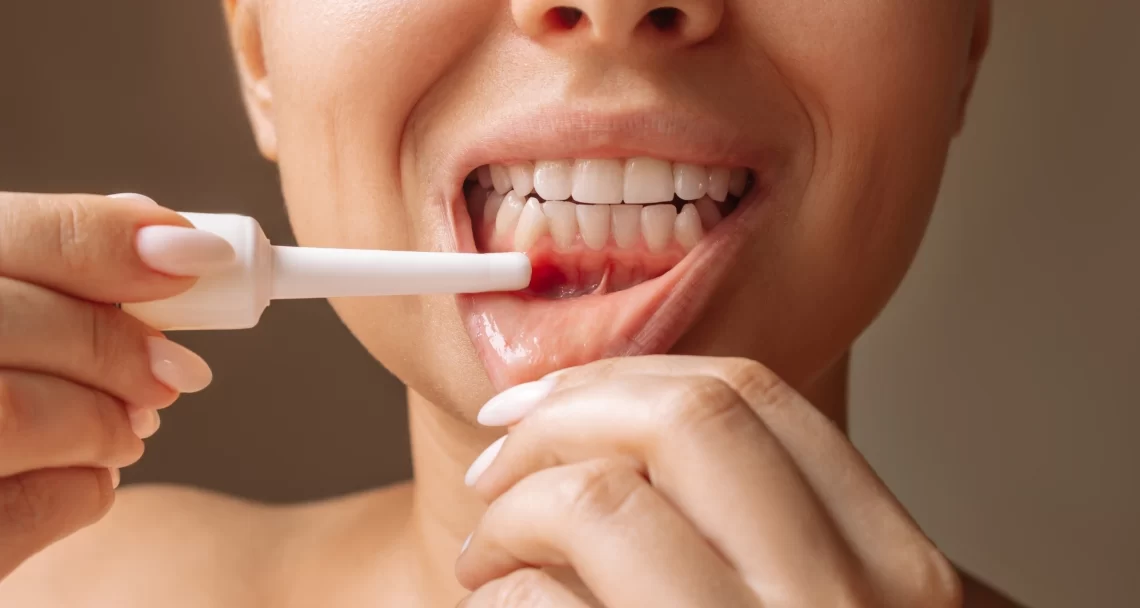
Periodontal Abscess: Symptoms, Causes, and Treatment Options
- Understanding Periodontal Abscess
- Causes of Periodontal Abscess
- Symptoms of Periodontal Abscess
- Treatment for Periodontal Abscess
- Home Remedies for Periodontal Abscess
- Prevention of Periodontal Abscess
- Consulting a Dentist for Periodontal Abscess
Understanding Periodontal Abscess
A periodontal abscess is a localized collection of pus that forms in the tissues around a tooth, often as a result of untreated gum disease or infection. This painful condition can lead to swelling, redness, and discomfort. If left untreated, it may cause severe complications, including tooth loss and the spread of infection to other areas of the body.
Periodontal abscesses are different from regular dental abscesses, as they specifically affect the tissues surrounding the tooth's root. They typically result from a bacterial infection in the gum pockets, leading to the formation of pus and inflammation.
Causes of Periodontal Abscess
The primary cause of a periodontal abscess is the accumulation of bacteria in the pockets of the gums. This can happen due to poor oral hygiene, which allows plaque and tartar to build up on the teeth and gums, leading to gum disease. Other contributing factors include:
- Severe gum disease (periodontitis)
- Trauma or injury to the gums
- Weakened immune system (due to illness or medication)
- Untreated cavities or cracked teeth
- Smoking or tobacco use, which can interfere with the body's ability to fight infection
If you have existing gum disease or any of these risk factors, you are more susceptible to developing a periodontal abscess.
Symptoms of Periodontal Abscess
The symptoms of a periodontal abscess can vary depending on the severity of the infection. Common signs to look for include:
- Severe pain or discomfort, especially when chewing or touching the affected tooth
- Swelling and redness around the gum area
- Pus drainage from the affected gum (may have a foul odor)
- Increased sensitivity in the teeth
- Fever, if the infection spreads
- Bad breath (halitosis)
If you notice any of these symptoms, it is important to seek treatment as soon as possible to prevent the infection from worsening.
Treatment for Periodontal Abscess
Treating a periodontal abscess typically involves a combination of professional dental care and self-care at home. Here are the common treatment options:
1. Professional Drainage and Cleaning
The first step in treating a periodontal abscess is to drain the pus and clean the area thoroughly. This can be done by your dentist, who will also remove any plaque or tartar buildup around the affected tooth. Draining the abscess helps reduce the pain and prevents the infection from spreading.
2. Antibiotics
If the infection is severe or has spread, your dentist may prescribe antibiotics to help eliminate the bacteria causing the abscess. These antibiotics can also prevent the infection from reaching other parts of the body.
3. Tooth Extraction or Surgery
In some cases, when the tooth is too damaged or the abscess is too deep, your dentist may recommend tooth extraction or gum surgery to remove infected tissue. This step is typically a last resort when other treatments have not been effective.
Home Remedies for Periodontal Abscess
While professional treatment is essential for managing a periodontal abscess, there are also a few home remedies that can help alleviate symptoms in the short term. These remedies should not replace professional care but can provide temporary relief:
1. Saltwater Rinse
A saltwater rinse can help reduce swelling and alleviate pain. Mix a teaspoon of salt in a glass of warm water and swish it around your mouth for 30 seconds to help cleanse the infected area.
2. Cold Compress
If you experience swelling or pain, applying a cold compress to the affected area can help reduce inflammation and numb the pain. Use a clean cloth wrapped around ice and hold it against your cheek near the abscess for 15-20 minutes at a time.
3. Over-the-Counter Pain Relief
Over-the-counter pain relievers, such as ibuprofen or acetaminophen, can help manage the discomfort associated with a periodontal abscess. Be sure to follow the dosage instructions carefully and consult with a healthcare provider if you have any concerns.
Prevention of Periodontal Abscess
Preventing a periodontal abscess involves maintaining good oral hygiene and addressing gum disease before it progresses. Here are some tips to keep your gums healthy:
- Brush your teeth at least twice a day using fluoride toothpaste
- Floss daily to remove plaque between your teeth
- Visit your dentist regularly for checkups and cleanings
- Quit smoking, as it weakens the immune system and makes you more vulnerable to infection
- Eat a balanced diet and avoid sugary foods that promote plaque buildup
By following these preventive measures, you can significantly reduce your risk of developing a periodontal abscess.
Consulting a Dentist for Periodontal Abscess
If you suspect that you have a periodontal abscess, it’s essential to consult a dentist promptly. Early treatment can prevent the infection from spreading and causing more severe complications.
At Dentistry Toothtruth, we specialize in the treatment of periodontal abscesses and other gum-related conditions. Contact us today to schedule an appointment and get the expert care you need to maintain healthy gums and a bright smile!







 Acworth Smiles Dentistry4.0 (145 review)
Acworth Smiles Dentistry4.0 (145 review) Ryan J Donovan DMD, MS, PA Periodontics And Dental Implants4.0 (113 review)
Ryan J Donovan DMD, MS, PA Periodontics And Dental Implants4.0 (113 review) New Lenox Dental Group4.0 (46 review)
New Lenox Dental Group4.0 (46 review) Clubhouse Pediatric Dentistry5.0 (208 review)
Clubhouse Pediatric Dentistry5.0 (208 review) NuSet Dental Implants and Oral Surgery of Scottsdale4.0 (20 review)
NuSet Dental Implants and Oral Surgery of Scottsdale4.0 (20 review) Simply Beautiful Smiles of Abington, PA4.0 (142 review)
Simply Beautiful Smiles of Abington, PA4.0 (142 review) The Importance of Oral Health Education During Pregnancy for a Healthy Pregnancy
The Importance of Oral Health Education During Pregnancy for a Healthy Pregnancy Best Tips for Brushing Your Teeth Properly for Healthy Gums: Essential Techniques for Oral Health
Best Tips for Brushing Your Teeth Properly for Healthy Gums: Essential Techniques for Oral Health Why Skipping Dental Checkups Can Lead to Bigger Oral Health Problems
Why Skipping Dental Checkups Can Lead to Bigger Oral Health Problems Advantages of Porcelain Dental Restorations
Advantages of Porcelain Dental Restorations How Can Diabetes Cause Tooth and Gum Problems? Preventing and Managing Oral Health Issues
How Can Diabetes Cause Tooth and Gum Problems? Preventing and Managing Oral Health Issues Healthy Habits for Promoting Good Oral Health and Hygiene: Tips for a Healthy Smile
Healthy Habits for Promoting Good Oral Health and Hygiene: Tips for a Healthy Smile